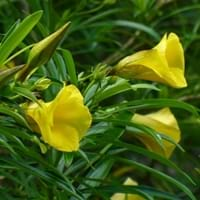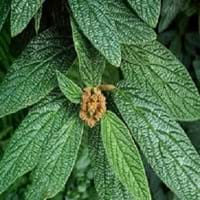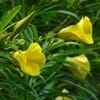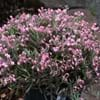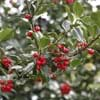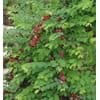Life Span
Perennial
Perennial
Type
Broadleaf Evergreen
Broadleaf Evergreen
Origin
Mexico, Central America, South America
China
Types
it is a type of oleander
not available
Habitat
coastal environs, disturbed sites, old gardens, open Woodlands, Pastures, Roadsides, Waste areas, waterways
Cold Regions
USDA Hardiness Zone
9-15
5-8
AHS Heat Zone
Not Available
Not Available
Habit
Oval or Rounded
Narrow Upright/Fastigiate
Flower Color
Yellow, Light Yellow, Peach
White, Yellow
Flower Color Modifier
Bicolor
Bicolor
Fruit Color
Red, Green, Black
Red, Black
Leaf Color in Spring
Green
Dark Green
Leaf Color in Summer
Green, Dark Green
Dark Green
Leaf Color in Fall
Dark Green
Dark Green
Leaf Color in Winter
Dark Green
Gray Green, Dark Green
Leaf Shape
Long Narrow
Lanceolate to elliptical
Plant Season
Spring, Summer, Fall, Winter
Spring, Summer, Fall
Sunlight
Full Sun
Partial Sun, Partial shade, Full Shade
Type of Soil
Loam, Sand
Clay, Loam, Sand
The pH of Soil
Acidic, Neutral, Alkaline
Acidic, Neutral, Alkaline
Soil Drainage
Well drained
Average
Bloom Time
Indeterminate
Late Spring
Tolerances
Pollution, Drought, Salt
Light Frost
Where to Plant?
Ground, Pot
Ground
How to Plant?
Seedlings
Transplanting
Plant Maintenance
Medium
Medium
Watering Requirements
Needs watering once a week, Water Deeply
Keep ground moist, Keep the Soil well drained
In Summer
Lots of watering
Lots of watering
In Spring
Moderate
Moderate
In Winter
Average Water
Average Water
Soil pH
Acidic, Neutral, Alkaline
Acidic, Neutral, Alkaline
Soil Type
Loam, Sand
Clay, Loam, Sand
Soil Drainage Capacity
Well drained
Average
Sun Exposure
Full Sun
Partial Sun, Partial shade, Full Shade
Pruning
Prune to stimulate growth, Remove dead branches
Remove damaged leaves, Remove dead branches, Remove dead leaves
Fertilizers
fertilize in spring, slow-release fertilizers
All-Purpose Liquid Fertilizer
Pests and Diseases
Bacteria, fungus, Insects
Aphids, Beetles
Plant Tolerance
Drought, Pollution, Salt
Light Frost
Flower Petal Number
Single
Single
Foliage Texture
Fine
Coarse
Foliage Sheen
Glossy
Glossy
Attracts
Not Available
Birds, pollinators
Allergy
Phytodermatitis, Toxic
Toxic
Aesthetic Uses
Showy Purposes
Farmland, Wild gardens
Beauty Benefits
Not Available
Not Available
Environmental Uses
Not Available
Air purification
Medicinal Uses
Not Available
No Medicinal Use
Part of Plant Used
Whole plant
Not Available
Other Uses
For making oil, Used as Ornamental plant
Acts as a natural source of rain water for birds and insects., Beneficial species for attracting pollinators
Used As Indoor Plant
No
No
Used As Outdoor Plant
Yes
Yes
Garden Design
Container, Feature Plant, Foundation, Hedges, Mixed Border, Screening, Wind Break, Shade Trees, Street Trees, Topiary, Bonsai, Espalier, Tropical
Feature Plant, Foundation, Mixed Border, Screening, Wind Break
Botanical Name
THEVETIA peruviana
VIBURNUM rhytidophyllum
Common Name
Yellow Oleander, Lucky Nut
leatherleaf plant
In Hindi
पीला कनेर
Leatherleaf Viburnum
In German
Gelbe Oleander
Runzelblättriger Schneeball
In French
Oleander Jaune
Viburnum rhytidophyllum
In Spanish
Oleander amarillo
Viburnum rhytidophyllum
In Greek
κίτρινη πικροδάφνη
Viburnum rhytidophyllum
In Portuguese
Oleander amarelo
Kalina sztywnolistna
In Polish
żółta Oleander
Kalina sztywnolistna
In Latin
Yellow haurit Cleander
leatherleaf viburnum
Phylum
Magnoliophyta
Magnoliophyta
Class
Magnoliopsida
Magnoliopsida
Order
Gentianales
Dipsacales
Family
Apocynaceae
Caprifoliaceae
Clade
Angiosperms, Asterids, Eudicots
Angiosperms, Asterids, Eudicots
Tribe
Not Available
Not Available
Subfamily
Not Available
Not Available
Number of Species
Not Available
Not Available
Importance of Yellow Oleander and Leatherleaf Viburnum
Want to have the most appropriate plant for your garden? You might want to know the importance of Yellow Oleander and Leatherleaf Viburnum. Basically, these two plants vary in many aspects. Compare Yellow Oleander and Leatherleaf Viburnum as they differ in many characteristics such as their life, care, benefits, facts, etc. Every gardener must at least have the slightest clue about the plants he wants to plant in his garden. Compare their benefits, which differ in many ways like facts and uses. The medicinal use of Yellow Oleander is Not Available whereas of Leatherleaf Viburnum is No Medicinal Use. Yellow Oleander has beauty benefits as follows: Not Available while Leatherleaf Viburnum has beauty benefits as follows: Not Available.
Compare Facts of Yellow Oleander vs Leatherleaf Viburnum
How to choose the best garden plant for your garden depending upon its facts? Here garden plant comparison will help you to solve this query. Compare the facts of Yellow Oleander vs Leatherleaf Viburnum and know which one to choose. As garden plants have benefits and other uses, allergy is also a major drawback of plants for some people. Allergic reactions of Yellow Oleander are Phytodermatitis and Toxic whereas of Leatherleaf Viburnum have Toxic respectively. Having a fruit bearing plant in your garden can be a plus point of your garden. Yellow Oleander has no showy fruits and Leatherleaf Viburnum has showy fruits. Also Yellow Oleander is not flowering and Leatherleaf Viburnum is not flowering . You can compare Yellow Oleander and Leatherleaf Viburnum facts and facts of other plants too.
